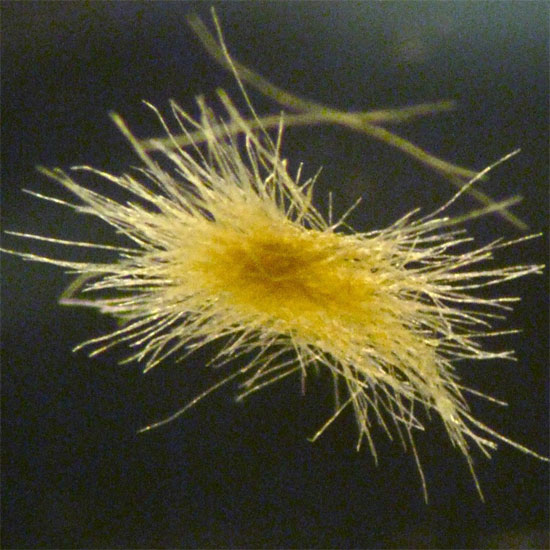Climate change impacts the food chain in the oceans
(Greenhouse gas) - Greenhouse gas seems to be changing the food chain at sea: CO2 in the atmosphere has a big impact on small bacteria.
Climate change can dislodge bacteria from their marine habitat, which are the foundations of the marine food chain, selecting some strains to survive, according to a study. new said.
In climate change, as in everything, there are always winners and losers. When atmospheric CO 2 concentrations and temperatures rise on a global scale, scientists increasingly want to study which species will adapt and dominate and which will die in the environment of future?
The answer to this question for cyanobacteria nitrogen fixing bacteria (bacteria that collect energy through photosynthesis, or blue-green algae), species that have relationships intimate with all forms of life in the ocean. Nitrogen fixation is a process when a particular organism, such as the blue algae cyanobacteria converts inert gas - and therefore cannot be reused - nitrogen gas from the air into a form of activity plays an important role. to other life forms that need air in the form of activity to survive. Lacking these nitrogen-fixing organisms, life in the sea cannot last long.

'Our findings suggest that CO 2 has the potential to control the biodiversity of key organisms in this marine ecosystem, and our fossil fuel emissions may be countering. responding to changes in the developing marine nitrogen fixing organisms' , David Hutchins, marine environmental professor at the Department of Literature, Arts and Sciences at USC Dornsife, and the lead author of The paper on this study was presented in the Journal of Natural Geological Sciences (Nature Geoscience) on June 30 explaining.
'This could include branching patterns for changes in marine food chains and productivity, potentially even influencing the resources that humans derive from the sea such as productivity. fishing, ' Hutchins said.
Hutchins and colleagues studied two major nitrogen-fixing green algae groups, Trichodesmium , which make floating blocks large enough to be seen with the naked eye and bloom into immense mass at sea estuaries, and species. The second is Crocosphaera , a very large species but a single-celled species.
Previous research has shown that these two green algae can be one of the most powerful species of climate change victories, prevailing when CO 2 levels rise in sea and sea warming. However, previous studies only conducted studies on one or two strains of these organisms.
USC University is home to a huge library of information about organisms and species. Using the information from the library, the team was able to show that some strains of bacteria grow better at different concentrations of CO 2 than at pre-industrial levels, while others will occupy dominant and thriving with the future of a 'greenhouse' earth .
'Not that climate change will wipe out nitrogen-fixing organisms, we have seen that there is abundance in nature's system. Moreover, an increase in atmospheric CO 2 makes a special change that nitrogen fixing bacteria seem to benefit, ' Hutchins said. 'and we have not yet fully determined whether it will transform the sea in the future'.
- FAO promotes reducing climate change impacts
- The warming climate affects the Antarctic food chain
- SimCLIM helps build climate change scenarios
- Bananas will dominate potatoes
- Climate change adversely affects health
- Climate change 'challenges' in the Pacific region
- America helps Vietnam fight climate change
- Climate change, the number of whales falls seriously
- 365,000 euros for climate change adaptation project
- Vietnam strives to reduce the impact of climate change
- Climate change affects food supply
- Announcing a map of climate change impacts in Southeast Asia
 Is the magnetic North Pole shift dangerous to humanity?
Is the magnetic North Pole shift dangerous to humanity? Washington legalizes the recycling of human bodies into fertilizer
Washington legalizes the recycling of human bodies into fertilizer Lightning stone - the mysterious guest
Lightning stone - the mysterious guest Stunned by the mysterious sunset, strange appearance
Stunned by the mysterious sunset, strange appearance